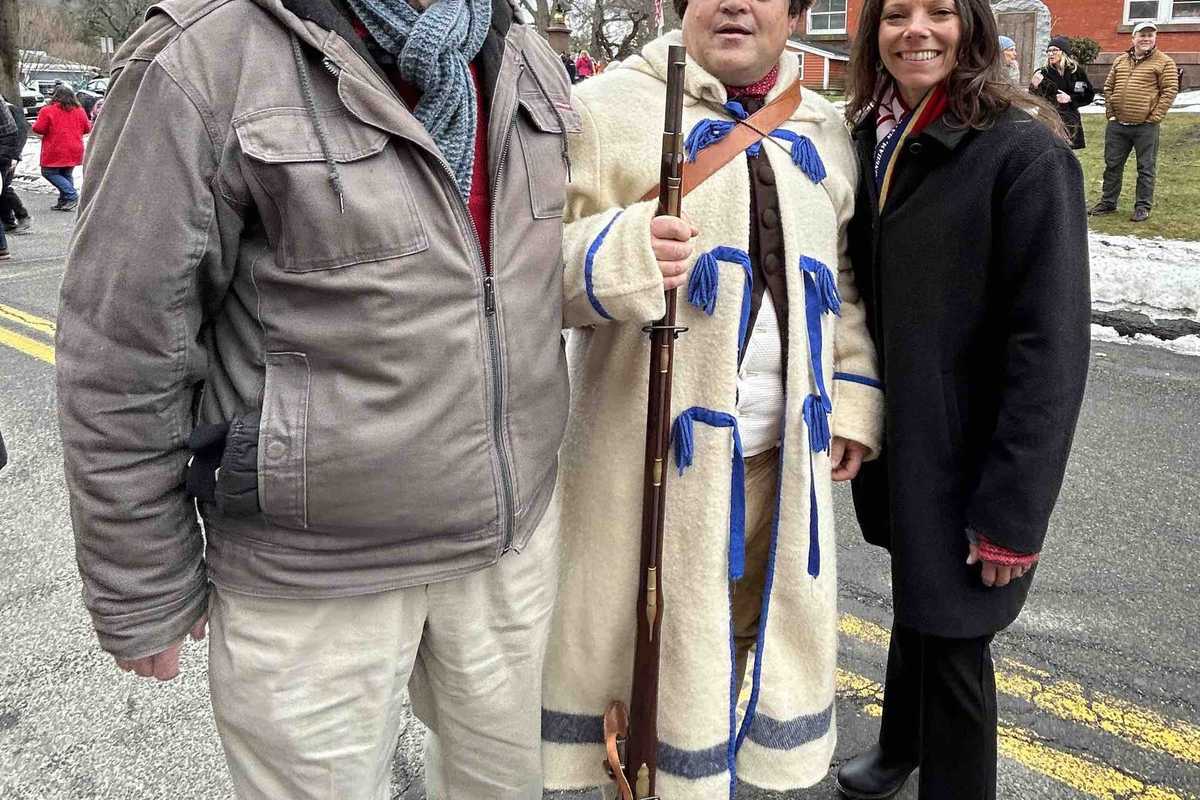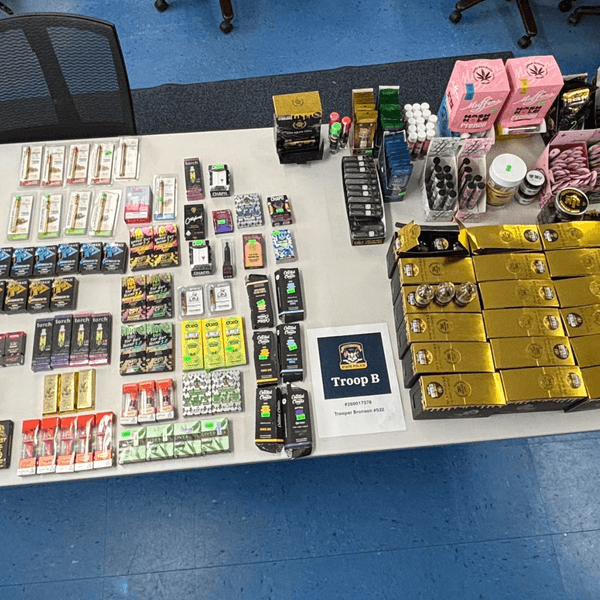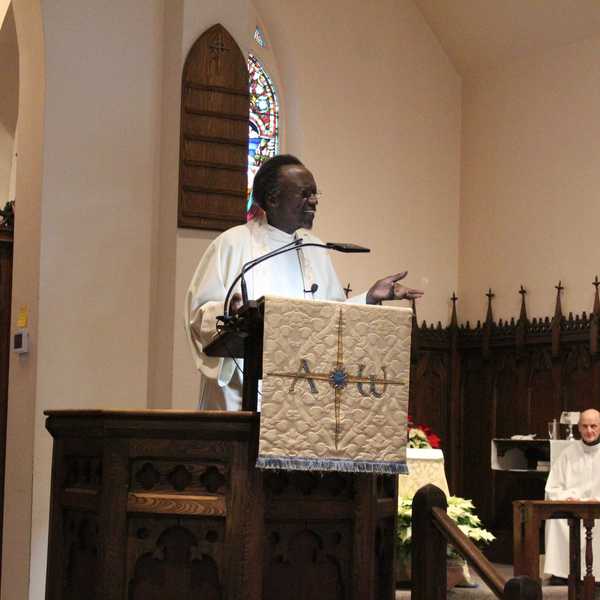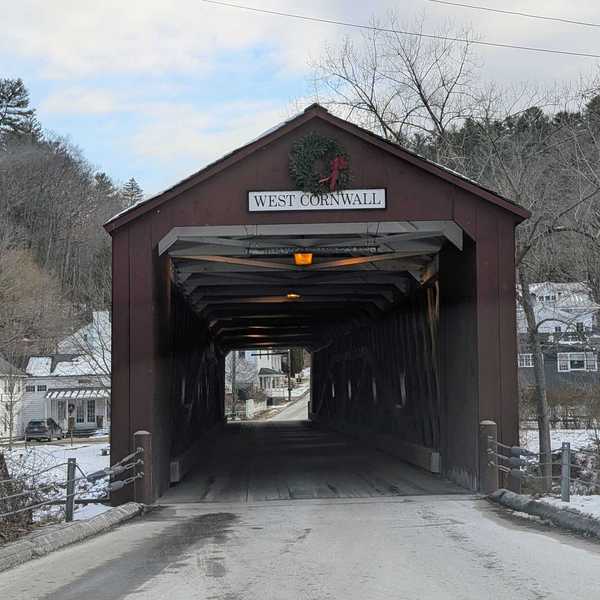Latest News
Living history
Jan 21, 2026
Donna Drew
The 250th anniversary of Henry Knox’s 300-mile march of cannons from Fort Ticonderoga through South Berkshire to Boston was celebrated with great hoopla Saturday in Alford and Great Barrington. Shown, from left, are Bernard Drew of Great Barrington, author of “Henry Knox and the Revolutionary War Trail in Western Massachusetts” (McFarland, 2012) and former associate editor of The Lakeville Journal and Millerton News. Center is Tim Abbott of North Canaan, executive director of Housatonic Valley Association and an enthusiastic re-enactor. Right is Leigh Davis of Great Barrington, Berkshire 3rd District representative to the General Court in Boston.
Cornwall real estate
Jan 21, 2026
Trees are already coming down at 14 River Road, a former church built in 1900 and converted into a 2 bedroom, 2.5 bath home. Overlooking the railroad tracks and Housatonic River, the house sold for $300,000 in November, below the listing price of $350,000.
Christine Bates
CORNWALL — The Town of Cornwall recorded six property transfers in the final quarter of 2025, typical activity for a town that averages 15 to 20 sales per year.
All recorded transfers were single-family residences, with three homes closing below $400,000 and three above, including 175 Dibble Hill Road, which sold for $1,075,000.
In December, the 12-month median price for a single-family residence was $750,000, well below the January 2025 median of $1,120,000—an all-time high for Cornwall driven by several high-end sales in 2024.
Transactions
36 Furnace Brook Road — 3 bedroom/2 bath ranch on 3.93 acres sold by Jane Cass Jackson and Roger Jackson to Ashleigh Marie Clare and Jacob Tyle Willis for $415,000.
15 Cemetery Hill Road — 3 bedroom/3 bath home on 3.05 acres sold by David and Jennifer Tucker to Benjamin and Allison Lesch for $750,000.
175 Dibble Hill Road — 2 bedroom/2 bath home built in 1938 on 18.31 acres sold by Aaron Landman to Alexandra Bogdanovich and Pax Wassermann for $1,075,000.
14 River Road — 2 bedroom/2.5 bath former church on 0.5 acres sold by Amy Shanler and Estate of Asher Pavel to Mark Ingall and Leone Siegrist for $300,000.
174 Bunker Hill Road — 1 bedroom/1 bath ranch built in 1930 on 1.7 acres sold by David E. Voelpel to Isaac Castro Viloria for $285,000.
6 Rocky Cove Lane — 1 bedroom, 616 square foot seasonal waterfront cottage on Cream Lake sold by Hebridean Hideaways LLC and David J. Hubbard to Cornwall Cabin LLC for $395,000.
* Town of Cornwall real estate transfers recorded as transferred between Oct. 1 and Nov. 30, 2025, provided by the Cornwall Town Clerk. Transfers without consideration are not included. Current market data courtesy of Smart MLS and InfoSparks. Compiled by Christine Bates, Real Estate Salesperson with William Pitt Sotheby’s International Realty, Licensed in Connecticut and New York.
Keep ReadingShow less
Falls Village Town Hall
File photo
“It is apparent that the one-size-fits-all requirements do not work.” —First Selectman Dave Barger
FALLS VILLAGE — The Board of Selectmen approved a letter from First Selectman Dave Barger to Secretary of the State Stephanie Thomas detailing concerns about early voting procedures at its meeting Monday, Jan. 12.
In the letter, Barger said that the financial impact on Falls Village and other small towns is considerable. “The cost of staffing, as well as the difficulty in finding poll workers to cover and operate polling places for additional days often exceeds the benefit, especially when voter turnout during these periods remains low. In our town, the cost for early voting was $8,200, with each early vote costing $115.75.”
Barger pointed out that in the most recent municipal election, only 70 — or 21% of the 326 total voters — voted during the 14-day early voting period. He wrote that the period also caused an “exponential growth in the responsibilities placed upon the Registrar of Voters.”
“In a small municipality where the Registrar’s role has been historically part-time employment, the increased responsibilities of scheduling and properly training poll workers, as well as changing technology and increased hours, have presented challenges for both the Registrars and their budgets.”
The letter concluded: “Early voting has been a very noble experiment, but with some serious and undue burdens for smaller municipalities. It is apparent that the one-size-fits-all requirements do not work.”
Town updates
Barger reported receiving a letter from a resident who slipped and fell on ice along Main Street, noting that the area had previously been salted and may have refrozen.
Tim Downs of the town’s highway department said crews have been operating at a heavy pace this winter, logging 55 hours of overtime per crew member and responding to 14 weather events in December alone.
Downs outlined the town’s snow and ice removal process, explaining that four staff members maintain six plow routes. Roadways are cleared first, followed by sidewalks, which are addressed as early as possible, ahead of business hours and the opening of the school. He added that certain areas with poor drainage are especially prone to refreezing.
Barger said a town meeting is expected to be held in late January. Agenda items are expected to include funding for a study of the Cobble Road bridge, an amendment or rescission of the Annual Report ordinance, and approval of a lease for a new business at the town-owned 107 Main St., formerly occupied by Furnace: Art on Paper.
Selectman Judy Jacobs said the board has received three inquiries regarding the vacant 107 Main St. storefront, adding that one proposal in particular appears to be a strong fit for the area.
Jacobs also updated the board on preparations for this year’s “America 250” commemoration of the signing of the Declaration of Independence.
The celebration will include a George Washington Ball at the Colonial Theater; Revolutionary War–era cemetery tours in June; and a series of Historical Society First Tuesday Talks focused on the Revolutionary period. Festivities will continue with a July 4 event on the town Green featuring a parade, live music, a public reading of the Declaration of Independence, and a cannon firing.
Keep ReadingShow less
Solar project advances at HVRHS
Jan 21, 2026
Housatonic Valley Regional High School
File photo
FALLS VILLAGE — The Region One Board of Education approved a third phase of a solar power installation at Housatonic Valley Regional High School during its Jan. 5 meeting, continuing a multi-stage project aimed at long-term energy savings and infrastructure upgrades.
Region One Business Manager Sam Herrick provided additional details in a Friday, Jan. 16 interview, outlining the scope and financial impact of the expansion.
The first phase of the project included solar panels installed over the school’s kitchen and gym, generating 128 kilowatts of power. A second phase added panels primarily to the agriculture education wing and the main building, increasing capacity by 267 kilowatts.
The newly approved third phase will add 209 kilowatts of capacity across four flat-roof sections of the campus. The agreement includes replacement of approximately 23,000 square feet of roofing in those areas — work that Herrick said would otherwise cost the district about $400,000.
Under the arrangement, electricity generated by the system is sold back to the grid by a third-party contractor. Herrick said the project is expected to save the district approximately $1.2 million over 20 years.
Despite the expanded solar capacity, HVRHS has not seen a reduction in its electric bills. Herrick attributed the increase to recent renovations that included new HVAC systems in the auditorium and cafeteria.
“These systems operate continuously — whether heating, cooling or simply circulating air,” Herrick said. “Even though the power bill has gone up, it would have gone up even more with the old, inefficient systems.”
Overall, Herrick said the solar project is “a good deal” for the district.
Keep ReadingShow less
loading









